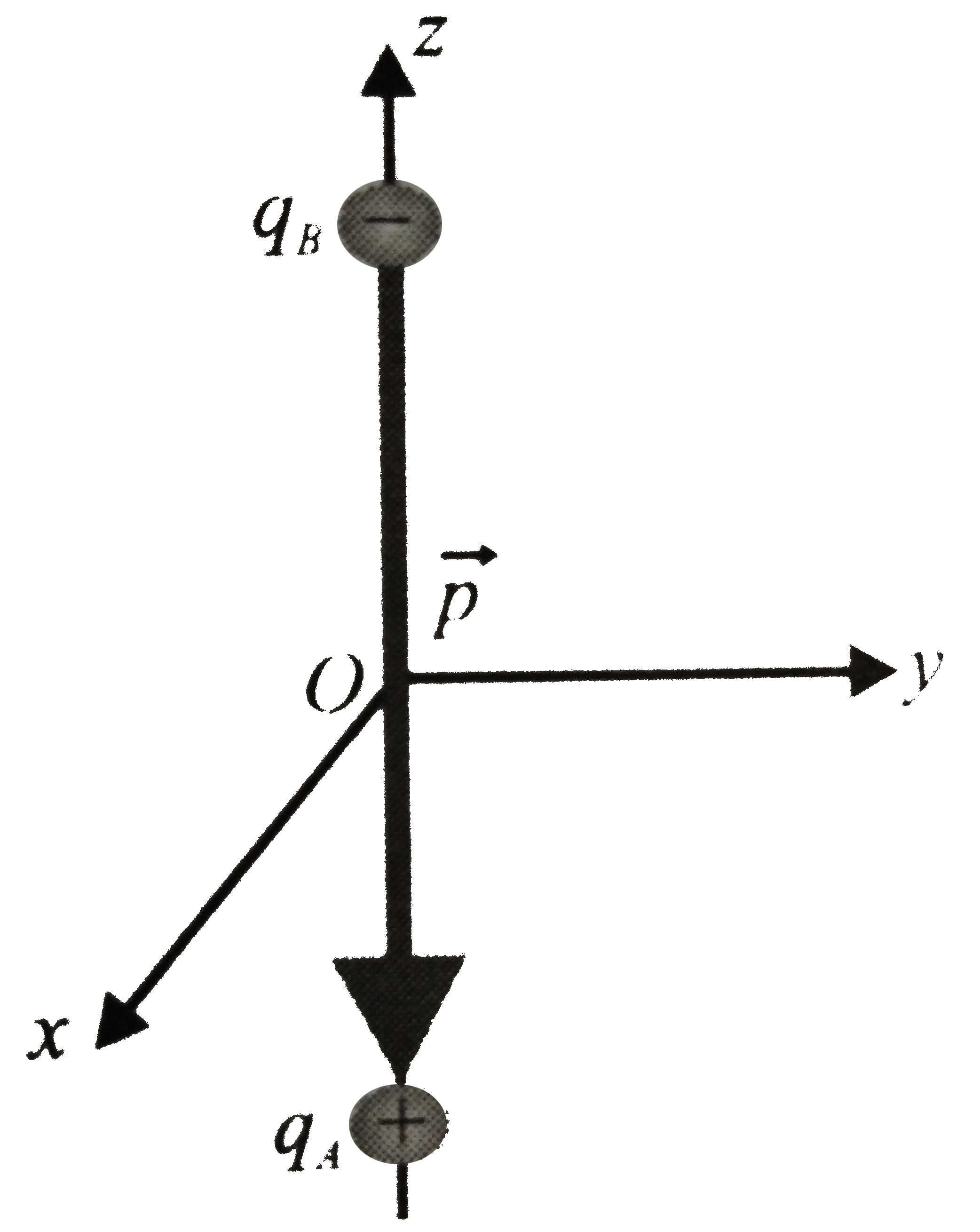A system has two charges qA=+2.5×10−7CandqB=+2.5×10−7C located at point A: (0,0,-15 cm)and B: (0,0,+15 cm), respectively. What are the total charge and eletric dipole moment of the system?

0 , 0
7.5×10−8C , 7.5×10−8Cm
7.5×10−8C , 0
0 , 7.5×10−8Cm
The correct Answer is:D
The two charges qA and qB are equal and opposite and situated a fixed distance apart, from an electric dipole. Thus the charge of the system is
qA+qB=2.5×10−7C−2.5×10−7C=0
The distance between the two charges is 2a=30cm=0.3m. So the dipole moment of the system is either charge×2a
=(2.5×10−7C)(0.3cm)=7.5×10−8Cm
The direction of →p as shown in fig. is from B to A, i.e. along the negative z-axis.

Topper's Solved these Questions
- COULOMB LAW AND ELECTRIC FIELDBook:CENGAGE PHYSICSChapter:COULOMB LAW AND ELECTRIC FIELDExercise:Solved examples
Explore 10 Videos
- COULOMB LAW AND ELECTRIC FIELDBook:CENGAGE PHYSICSChapter:COULOMB LAW AND ELECTRIC FIELDExercise:Exercises
Explore 58 Videos
- COMMUNICATION SYSTEMBook:CENGAGE PHYSICSChapter:COMMUNICATION SYSTEMExercise:QUESTION BANK
Explore 19 Videos
- Current ElectricityBook:CENGAGE PHYSICSChapter:Current ElectricityExercise:QUESTION BANK
Explore 40 Videos
Similar Questions
A system has two charges qA=2.5×10−7CandqB=−2.5×10−7C located at points A:(0,0,−15cm)andB:(0,0+15cm), respectively. What are the total charges and electric dipole moment of the system ?
View SolutionA system has two charges qA=+2.5×10−7CandqB=−2.5×10−7C located at point A: (0,0,-15 cm)and B: (0,0,+15 cm), respectively. What are the total charge and electric dipole moment of the system?

View Solution
Knowledge Check
Three point charges 1μC,1μC and −2μC are placed at points having coordinates (0,1,0)cm, (1,0,0) cm and (0,0,0)cm respectively. The magnitude of electric dipole moment of the system is
A10−8CmB√2×10−8CmC√3×10−8CmD2×10−8CmIf point charges Q1=2×10−7C and Q2=3×10−7C are at 30 cm separation, then find electrostatic force between them
A2×10−3NB6×10−3NC5×10−3ND1×10−3N
Two charges - q and + q are located at points A(0, 0, -a) and B(0, 0, +a) respectively. How much work is done in moving a test charge from point P(7,0,0) to Q(-3,0,0) ?
View Solution(i) Can two equpotential surfaces intersect each other ? Give reason.
(ii) Two charges +qand−q are located at points A (0,0,−2)andB(0,0,2) respectively. How much work will be done in moving a test charge from point P(4,0,0) to (−5,0,0) ?
View SolutionTwo charges of +5nC and -2nC are placed at points (5cm, 0, 0) and (23cm, 0, 0) in a region of space where there is no other external electric field. Calculate potential energy of this charge system.
View SolutionTwo identical charges of -0.1 μC are palced at point A (0, 0) and B (8cm, 0) respectively. Calculate the value of charge Q to be placed at a point M (4 cm, 0) such that the electrostatic potential energy of the system is zero.
View SolutionTwo point charges q1=2×10−3C and q2=−3×10−6C are separated by a distance x=10 cm. Find the magnitude and nature of the force between the two charges.
View SolutionTwo point charges, q1=10×10−8Candq2=−2×10−8C, are separated by a distance of 60 cm in air.
Find at what distance from the 1st charge q1, would the electric potential be zero.
View Solution
